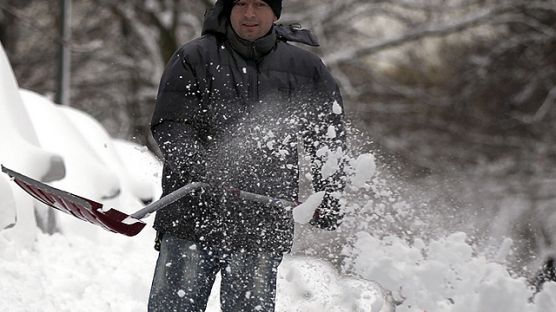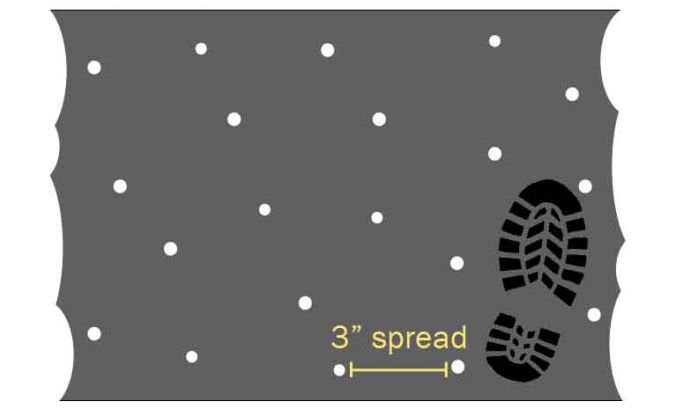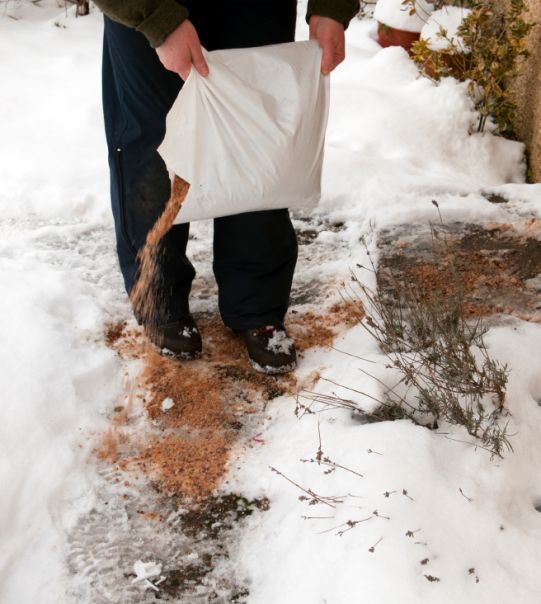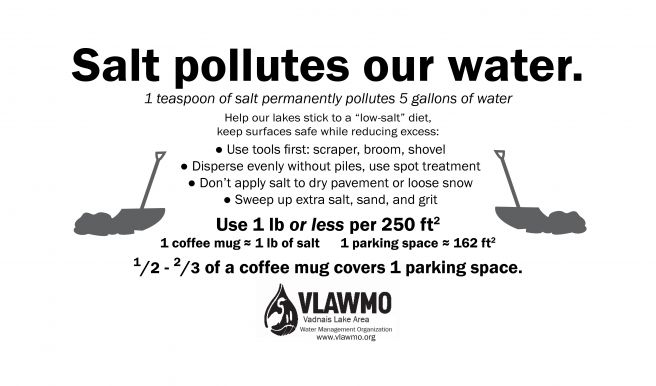Six Tips for Smart Salting
Did you know that one teaspoon of rock salt is enough to pollute 5 gallons of water? Once salt is introduced into our lakes and wetlands, it’s stuck in that water as it moves along to larger rivers and lakes. This changes the aquatic environment and harms our water resources over time. In addition to posing threats to water quality, salt causes damage to concrete and asphalt, potentially causing it to heave or crack.
This winter, join us in keeping our surfaces safe but limiting excess, keeping our lakes on a “low-salt diet.”
What can you do?
1. Use tools first and soon after a snowfall.
This avoids compaction and ice build-up before it starts.

Photo: WCCO
2. Practice spot-treatment to target high traffic areas.
Ouch! We all know a nasty corner that catches us off guard. Targeting these spots helps put our focus where it counts, and spares the excess elsewhere.

3. Disperse salt evenly without piles.
More salt in the same spot doesn't melt more ice - the melt rate remains the same, and the proper amount does the job to break the ice's bond to the pavement. Take note on which products fit certain temperatures. The goal is to have little to no left over once the melting is complete.

4. Don't apply dry salt to dry pavement.
This risks more salt being blown or kicked away, which doesn't prevent ice and adds more to the lake. In high traffic areas, liquid products are sometimes used for pre-treatment (or anti-icing). This prevents ice from forming in the first place, and covers more surface area. For a cost effective pre-treatment in icy conditions, try a homemade brine by mixing salt and hot water. This same mixture also works as a de-icer, creating more contact with a surface and conserving salt use. Be careful not to mix more than you'll use -- excess solution still finds its way to soil or a waterway.

5. Sweep up extra salt and sand.
When no longer needed (such as Spring), cleaning up surfaces prevents them from going into melt water running into the street and eventually, the lake. Sand and grit are great for adding traction, but don't melt ice.

6. Help spread the word.
Check out our Winter Clean Water Practices poster to print and disperse at your school, workplace, or community group.
So how much salt is OK to use? The Minnesota Pollution Control Agency encourages us to apply about 2 lbs. of salt per 500 ft2 , or 1 lb. per 250 ft2. A 12 oz. coffee cup is about 1 lb. of salt. A parking space typically covers about 162 ft2, requiring just over half of a lb. of salt. Therefore 1/2 - 2/3 of a coffee mug covers one parking space (assuming the entire area is covered with ice). For more information on salt and water quality, visit the MPCA website or check out the Good Choices for Clean Water video.
Free Salt Measuring Cups
Free salt measuring cups are available at the VLAWMO office to help guide application rates. Click here to download the cup graphic.


